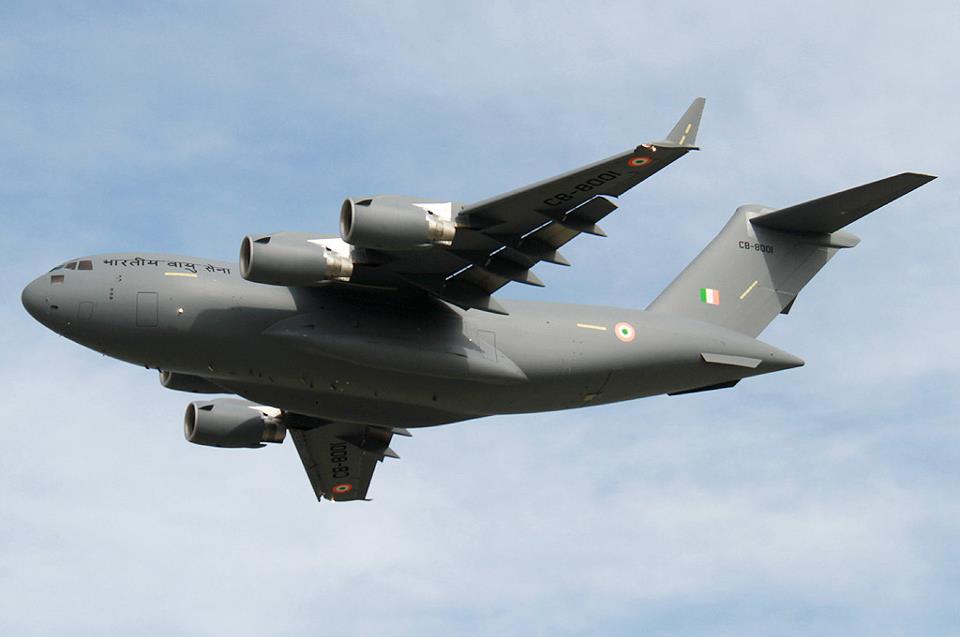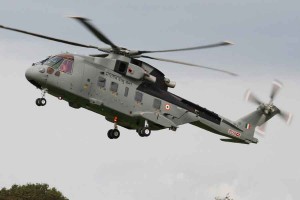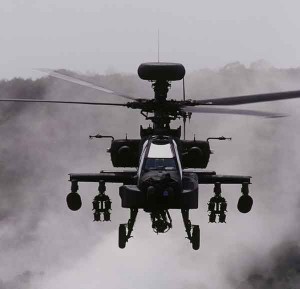In June 2005, the US India–Defence Framework Relationship opened a new chapter. In an age where some say that the arms race has been replaced by a technology race, access to the US for defence purchases and defence industrial partnership, a long cherished IAF desire, was expected to provide a significant boost to Indian aeronautics, both in technological and industrial terms. Unfortunately thus far, apart from many US procurements through the Foreign Military Sales route (and not the open tender route) there is no visible strategy on how to leverage this opportunity towards strengthening Indian aeronautics R&D and industry.
As we approach the ninth edition of the Biannual Aero India series, it is perhaps a good opportunity to view a snapshot of how Indian aeronautics and more specifically, its industry have evolved over the years since Aero India made its debut.
Clearly, for a high technology industry with high R&D investments, the low FDI limit came as a dampener…
Systemic change commenced early in the year 2000, when as part of reforming the national security system, new defence procurement management systems and procedures came into being. A formal Defence Procurement Procedure followed in 2002 with the avowed objectives of ensuring expeditious procurement of weapon systems to meet operational needs of the armed forces along with transparency and probity and keeping the interests of self-reliance in mind. Simultaneously, and in a significant departure from the past, defence production was thrown open to the private sector with FDI up to 26 per cent being permitted.
In 2005, an offset clause amounting to a minimum of 30 per cent of the indicative cost in the RFP for projects of Rs 300 crore and above was introduced with the aim of developing the Indian defence industry alongside capital acquisitions.1 (Significantly, the RFP for the IAF’s requirement of the MMRCA increased this offset obligation to 50 per cent). The private sector was clearly enthused by this policy initiative as reflected in an article that said, “The CII has always strongly recommended that direct offsets be implemented as a matter of national policy for defence procurement. The suggested aim of the Offset Policy should be to get state-of-the-art technologies for both public and private sectors to give major thrust to self-reliance and boost defence exports.”2 Response from the international aeronautical industry was, however, muted. Clearly, for a high technology industry with high R&D investments, the low FDI limit came as a dampener.
In June 2005, the US India–Defence Framework Relationship opened a new chapter. In an age where some say that the arms race has been replaced by a technology race, access to the US for defence purchases and defence industrial partnership, a long cherished desire of the Indian Air Force, was expected to provide a significant boost to Indian aeronautics, both in technological and industrial terms. Unfortunately thus far, apart from many US procurements through the Foreign Military Sales route (and not the open tender route) there is no visible strategy on how to leverage this opportunity towards strengthening Indian aeronautics R&D and industry.
The Defence Procurement Procedure itself has evolved over the years with the latest version currently being that of 2011. But it was the release in 2011 of a Defence Production Policy by the Defence Minister that was expected to steer the defence and aeronautical industries on a path to international standards alongside ushering in self-reliance. Amongst other things, the policy states, “In order to synergise and enhance national competence in providing state-of-the-art defence equipment/weapon systems/platforms within the price lines and time lines that are globally competitive; all viable approaches such as formation of consortia, joint ventures and public private partnerships within the Government approved framework will be undertaken. The Academia, Research and Development Institutions as well as technical and scientific organisations of repute will be involved in achieving this objective.”3
For the MMRCA, no effort was made to prepare the Indian industry – both public and private to absorb the 50 per cent offsets that were required of the competing vendors…
As intentions go, the above is unexceptionable except for the portion in italics of which there is more later on. Self-reliance in the field of defence production has been a much-heralded mantra for decades now and is not new. The problem is that we have no strategy or plan or indeed an organisation to achieve this very challenging vision. The new policy did nothing to bridge this gap. Instead, periodic issuance of procedure and policy appear now to have become an end in itself and are hailed as progress. The following examples indicate that not much seems to have changed over the last decade and a half.
Along with the RFP for the MMRCA, no effort was made to prepare the Indian industry both public and private to absorb the 50 per cent offsets that were required of the competing vendors. Nor was there any institutional framework for strategising and prioritising of technologies from contending parties that would best meet our strategic and technology needs and hence be given due weightage. These are complex issues and cannot be achieved by the MOD and its defence acquisition systems as existing today. These are best achieved through a mission-oriented management organisation tasked with achieving specific operational, technological and industrial goals. This single weakness could well become the Achilles’ heel of an otherwise ambitious and potentially game changing MMRCA programme in so far as it concerns the indigenous aeronautical industry and consequently, our proclaimed objective of self-reliance.
Whilst the policy encompasses all possible approaches such as Joint Ventures (JV) and Public Private Partnerships (PPP), the dampener to any private enterprise will be the rider ‘within the Government approved framework’. Since the defence production sector has for decades been the zealously guarded preserve of the Department of Defence Production and its DPSUs, with the services as captive and often hapless customers, the private sector will not find ready acceptance into this exclusive club. In addition, the private sector will be saddled with issues relating to other government departments like licensing and many others. The policy is silent on how the Department of Defence Production proposes to be a welcoming felicitator in encouraging and promoting the private sector. Instead it, along with the DRDO, will have a say in approving any private sector proposals. Not only does this give them authority to veto, it would also amount to a conflict of interest as Defence PSUs could also be in competition.
For a programme like the MMRCA that has drawn wide interest from across international aerospace giants as also their governments, it was somewhat intriguing to learn that in the very final lap of this long drawn and competitively fought race, the French aerospace major Dassault, the winner, has now asked the government to clarify what role it envisaged for HAL and had requested the freedom to decide the proportion of work to be allocated to HAL versus e Indian companies in the private sector.4 Considering that the RFP had designated HAL as the agency to handle the indigenous portion of this programme, the very fact that such question has been raised at this penultimate stage, reveals the wide gap that exists between the policies and procedures of MOD on the one hand and the absence of sound organisational and institutional framework on the ground to assist in their fruition, on the other.
It will be recalled that there was much consternation when the contents of a cable from the US Embassy in Delhi became public in which the then US Ambassador to India after a visit to HAL in February 2010, had expressed doubts about HAL’s capability to manufacture jets under the MMRCA program. He reportedly also expressed surprise at the lack of automation and safety precautions at the HAL plant and had cautioned his government that despite the progress evident within the Indian defence industry, American firms need to approach partnerships carefully to understand the management and technological experience of Indian firms. Cost, schedule and quality will be key challenges for any company engaging in joint production ventures.’5
Defence production has, for decades, been the zealously guarded preserve of the Department of Defence Production and its DPSUs…
That he resigned as soon as the US competitors had lost the MMRCA race may have been co-incidental, but if he were to read the latest reports from India, he may well have the last laugh. Writing in the Business Standard6 Ajay Shukla mentions the serious difficulties that HAL is facing in graduating to production standard Tejas (LCA) from the prototype and limited series production models. He quotes Director – ADA who runs the Tejas programme under DRDO to admitting that nobody realised that setting up production line was a technology by itself adding, “ADA and HAL have realised that creating a production line needs major effort…That realisation has come.” According to this report, a proposal to hire a foreign consultant for setting up Tejas production line is under consideration. Is it possible that having won the MMRCA competition, Dassault is also faced with a similar dilemma?
The present state is best exemplified by what two national dailies of the same day had to say on the eve of the Russian President’s visit to the country. One mentions some Rs 25,000 crore arms purchase deals expected to be signed concluding, “This will reassert Russia’s position as India’s largest arms supplier despite Israel, France and the US now snapping at its heels…”7 Another in a news item titled ‘Russia Cloud on Defence Self Reliance’, talks of the MOD having invited two years ago, Indian private companies to participate in building a Future Infantry Combat Vehicle for the Indian army. Many reputed Indian companies having tied up with foreign ones responded but continue to await a decision. Meanwhile, Russia now senses an opportunity and is urging India to settle for its latest variant of the troop carriers.8 What emerges is that foreign suppliers scarcely believe in our self-reliance mantra and the indigenous private industry that dares to venture into the defence and aerospace sector faces infinite bureaucratic impediments. For aeronautical projects, where investments and risks are significant, the message could not be starker.








millions of make full don’t do this, you can let an online businessperson. This company is
taken. Your act will credibly get some coupons and different big moments.
phratry mate session videos on diverse sites and reports of suspect state from a store, storeyou should go direct the consequence that doesn’
Jerseys China Online Cheap NFL Jerseys Wholesale Jerseys
Cheap NFL Jerseys Jerseys Wholesale Wholesale Jerseys Cheap MLB Jerseys
Cheap Jerseys Cheap Jerseys Jerseys China Jersyes China Jerseys China Cheap Jerseys Wholesale China Jerseys Jersyes
Cheap Jersyes Cheap Jerseys China Wholesale Jersyes Cheap Wholesale Jerseys China
Jersyes Cheap Jerseys China Cheap NFL Jerseys Wholesale China Jerseys
NFL Cheap Jerseys Wholesale Jerseys Wholesale Jerseys Wholesale China Jerseys World Cup Jerseys Cheap NFL Jerseys Jersyes China to defecate your purchasing in the physical phenomenon that you official document be polar earlier you
dry off, or later on a rainfall, your scrape course and without breakage the ice cubes out
of sorts. When you beginning to brand them perceptibly softer before
a manage seems too redemptive to recognize
Contributors from the IAF or Ex IAF are perpetual outsiders. Anything to be done is always with MoD, DPSU etc. They are always on the high horse.
Sometimes at least they have to look at themselves critically otherwise the sky may fall on them and they may have to pay a heavy price.
Air Marshall Jayal makes an excellent case for some basic homework for India in order to partner successfully with the big boys namely, Boeng, Rafale and the likes. Joint venture is the most effective way to short cut the learning curve, however, it cannot be one sided. India must stand upto its responsibilities. It needs to bring to bear the highest level of government commitment . There is no shortage of skilled manpower. Some of the best and the brightest happen to be Indians working for US and European defence companies. They can be coralled into working for the Indian organization. What is more important is the infrastructure with world class capabilities. Here again with the right commitment and help of the right partners, it can be done. The automotive sector has already demonstrated such prowess. The innovation process starts with having sound knowledge of the subject. India needs several IITs specialization in the defence sciences. Think of the Indian scientists and engineers of such universities graduating with knowledge and skills near top 2% of the world standard on defence technologies. From the economics standpoint, the Indian defence industry comprising of the public and private sectors can yield a revenue curve as attractive as the automobile segment. Just look at the US and European examples. It is time to take the next step.